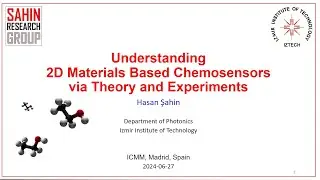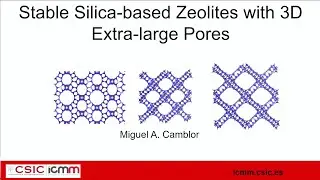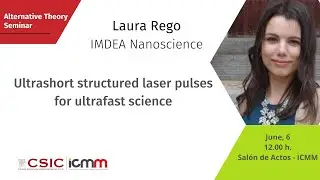2D Carbides and Nitrides (MXenes): the Building Blocks for Advanced Technology | By Yury Gogotsi
Yury Gogotsi, from the A.J. Drexel Nanomaterials Institute, and the Department of Materials Science and Engineering at the Drexel University, visited the Material Science Institute of Madrid. He met some of our researchers and gave us this seminar.
MXenes are a family of two-dimensional (2D) early transition metal carbides, nitrides, oxycarbides, carbonitrides, and related structures with a general formula of Mn+1XnTx, where M is a transition metal, X is carbon or nitrogen (oxygen substitution is possible), T represents the surface terminations (O, OH, halogen, chalcogen, etc.), and n = 1—4 [1]. More than 50 MXene compositions have already been reported, but the number of possible compositions is infinite if one considers solid solutions and combinations of surface terminations. MXenes open an era of computationally driven atomistic design of 2D materials. MXenes possess electronic, optical, mechanical, and electrochemical properties that differentiate them from other materials. Chemically tunable superconductivity has been demonstrated in Nb- and Mo-based MXenes. Highly nonlinear optical properties of MXenes are being explored. Several MXenes have been predicted to act as topological insulators. Many MXenes are metals but with a tunable density of states at the Fermi level, like semiconductors. Moreover, their properties are tunable by design. They can be modulated using an ionotronic approach [2], leading to breakthroughs in the fields ranging from optoelectronics, electromagnetic interference shielding, and communication to energy storage, catalysis, sensing, and healthcare. Electrochemical energy storage, electrocatalysis, and capacitive and solar water deionization are among the most promising applications for MXenes. MXenes can be used as current collectors, conductive binders, and active materials in a variety of batteries. In this talk, I’ll discuss the synthesis and structure of MXenes, their electrochemical properties, and the coupling between electrochemical redox processes in MXenes and their optical properties, which can be monitored in situ using spectroelectrochemistry techniques [3].
[1] A. VahidMohammadi, J. Rosen, Y. Gogotsi, The World of Two-Dimensional Carbides and Nitrides (MXenes), Science, 372, eabf1581 (2021)
[2] M. Han, D. Zhang, C. E. Shuck, B. McBride, T. Zhang, R. (John) Wang, K. Shevchuk, Y. Gogotsi, Electrochemically Modulated Interaction of MXenes with Microwaves, Nature Nanotechnology, 18, 373–379 (2023)
[3] D. Zhang, R. (John) Wang, X. Wang, Y. Gogotsi, In situ monitoring redox processes in energy storage using UV-Vis spectroscopy, Nature Energy, 8, 567–576 (2023)































